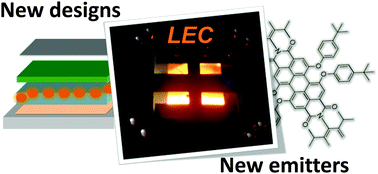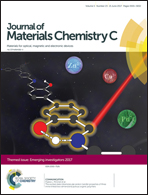Beyond traditional light-emitting electrochemical cells – a review of new device designs and emitters
Abstract
In the field of solid-state lighting (SSL) technologies, light-emitting electrochemical cells (LECs) are the leading example of easy-to-fabricate and simple-architecture devices. The key-aspect of this technology is the use of a single active layer that consists of a mixture of an emitter and an ionic polyelectrolyte. The presence of mobile anions efficiently assists both charge injection and charge transport processes using air-stable electrodes. This concept reported in the mid-90s was considered as a game-changer approach, leading to a new field in SSL. Since then, the evolution of the LEC technology has involved different stages, namely (i) the search for the best combination of emitters (luminescent conjugated polymers and ionic transition complexes) and additives (ionic polyelectrolytes, ionic liquids, and neutral polymers), (ii) the understanding of the device mechanism using several techniques like electrostatic force microscopy (EFM), microcavity effects, scanning Kelvin probe microscopy (SKPM), time-of-flight secondary ion mass spectroscopy (ToF-SIMS), electrochemical impedance spectroscopy (EIS), etc., (iii) the development of simple and up-scalable device fabrication processes and, recently, (iv) the quest for new emitters like copper(I) complexes, small-molecules, quantum dots, and perovskites. This review provides a general overview of the first three points and, in particular, an in-depth revision of the recent advances in designing new architectures and emitters for LECs.

- This article is part of the themed collections: 10th Anniversary: Most popular articles, Recent Review Articles and Journal of Materials Chemistry C Emerging Investigators

 Please wait while we load your content...
Please wait while we load your content...